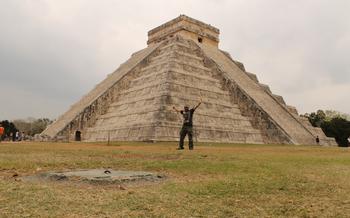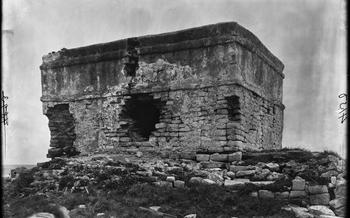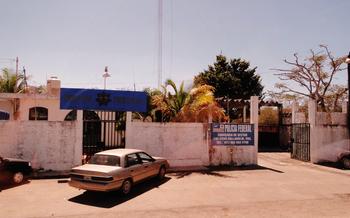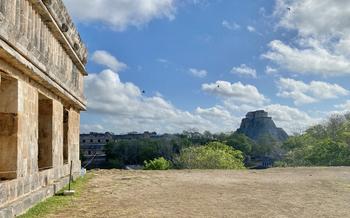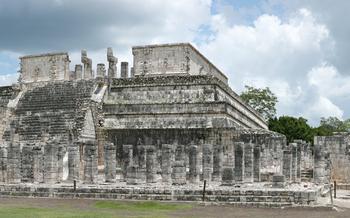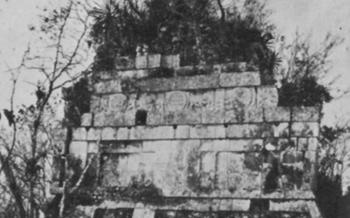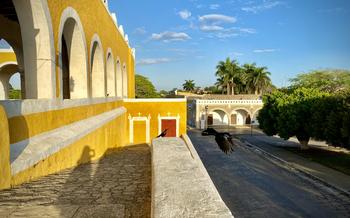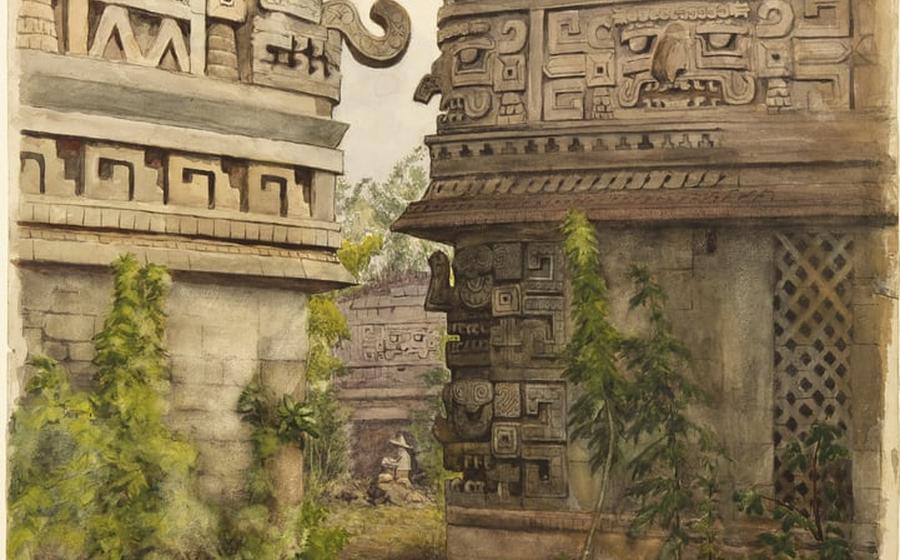
Akumal
- Chichen Itza: A Majestic Mayan City
- Exploring the Pyramid of Kukulcan
- Architectural Features and Symbolism
- Climbing the Pyramid (if allowed)
- The Phenomenon of the Equinox
- Discover the Temple of Warriors
- Unravel the Mysteries of the Great Ball Court
- Admire the Sacred Cenote
- Visit the Temple of the Skulls
- Explore the Nunnery Quadrangle
- Immerse Yourself in the Chichen Itza Museum
- Take a Guided Tour for In-Depth Knowledge
- Capture the Magic of Sunrise or Sunset
- Enjoy Local Delicacies at Nearby Restaurants
- Purchase Souvenirs at the Market
- Stay Overnight for a Unique Experience
- Plan a Multi-Day Itinerary
- Insider Tip: Avoid Crowds and Heat
Chichen Itza: A Majestic Mayan City
Chichen Itza, a UNESCO World Heritage Site, stands as a testament to the ingenuity and grandeur of the ancient Mayan civilization. Located in the Yucatán Peninsula of Mexico, this once-thriving metropolis played a pivotal role in Mayan political, economic, and religious life. Its well-preserved structures, awe-inspiring pyramids, and intricate carvings offer a glimpse into the rich history and cultural legacy of the Maya.
The name Chichen Itza translates to "At the Mouth of the Well of the Itza," a reference to the nearby cenote, a natural sinkhole with religious significance. The city flourished between the 7th and 13th centuries AD, reaching its peak during the Terminal Classic period. It served as a major trading hub, a center of religious pilgrimage, and a political powerhouse, exerting influence over a vast region of Mesoamerica.
Getting to Chichen Itza is relatively easy. It is situated approximately 120 kilometers east of Mérida, the capital of Yucatán. Visitors can reach the site by car via well-maintained highways or opt for organized tours from major cities in the region. The best time to visit Chichen Itza is during the shoulder seasons (April-May and September-October) to avoid the peak tourist crowds and sweltering summer heat.
Exploring the Pyramid of Kukulcan
The Pyramid of Kukulcan, also known as El Castillo, stands as the centerpiece of Chichen Itza, a testament to the architectural prowess and astronomical knowledge of the ancient Mayans. Rising 79 feet (24 meters) above the main plaza, this iconic structure embodies the veneration of Kukulcan, the feathered serpent deity.
Architectural Features and Symbolism
The pyramid showcases a remarkable blend of architectural precision and symbolic significance. Its four sides align with the cardinal points, and each side features 91 steps, totaling 364 steps, representing the days of the Mayan calendar year. The summit is crowned by a temple, adorned with intricate carvings and sculptures depicting feathered serpents and other sacred figures.
Climbing the Pyramid (if allowed)
For those seeking an immersive experience, climbing the Pyramid of Kukulcan was once permitted, offering breathtaking panoramic views from the top. However, due to safety concerns and the preservation of the ancient monument, climbing is now restricted. Visitors can still admire the pyramid's grandeur from its base, appreciating its architectural details and symbolic significance.
The Phenomenon of the Equinox
The Pyramid of Kukulcan aligns perfectly with the sun during the spring and fall equinoxes, creating a mesmerizing optical illusion. As the sun sets on these special days, the shadows cast by the pyramid's northwest corner create the illusion of a serpent descending the staircase, a spectacle that draws visitors from around the world.
Discover the Temple of Warriors
History and Significance: The Temple ofinspiring structure located within the ancient city of Chichen Itza, Mexico. Its construction dates back to the 13th century AD and is believed to have served as a place of worship and administrative center for the Mayan civilization. Dedicated to the warrior god Chaac Mool, the temple holds immense historical and cultural significance, providing insights into the religious practices, military might, and social structure of the ancient Mayans.
Intricate Carvings and Sculptures: The Temple of Warriors boasts intricate carvings and sculptures that adorn its exterior, showcasing the exceptional artistic prowess of the Mayans. These carvings primarily depict warriors dressed in elaborate costumes, engaged in battle scenes or performing ceremonial rituals. The temple's facade is adorned with a series of stone panels, each narrating a chapter in the Maya's rich history. These intricate carvings offer a glimpse into the lives, traditions, and beliefs of this ancient civilization.
The Thousand Columns: One of the most striking features of the Temple of Warriors is the presence of "a thousand columns" or "el Grupo de las Mil Columnas" that surround the main structure. These columns, though not literally a thousand in number, create an impressive colonnade, adding to the grandeur and visual appeal of the temple. The columns served as supports for the temple's roof, providing stability and creating a sense of spaciousness within the interior chambers.
Unravel the Mysteries of the Great Ball Court
The Great Ball Court, also known as the Juego de Pelota, is a remarkable feature of Chichen Itza that holds great significance in Mayan culture. This colossal court, measuring an astonishing 168 meters in length and 70 meters in width, is one of the largest and most well-preserved ball courts in the Maya region.
Archaeological evidence suggests that the ball game played here was a sacred ritual, deeply intertwined with religious beliefs and social hierarchy. The Mayans believed that the outcome of the game had implications for agriculture, warfare, and the overall well-being of the community.
The acoustics of the court are particularly intriguing. The sloping walls and carefully placed stone rings create an echo effect that amplifies the sound of the ball hitting the walls, allowing spectators to hear the game from a distance.
One of the most captivating stories associated with the Great Ball Court is the decapitation ritual. It is believed that the losing team's captain was decapitated as a sacrifice to the gods, ensuring the continued favor and protection of the deities. This gruesome practice reflects the deep religious significance of the game and the high stakes involved.
Admire the Sacred Cenote
The Sacred Cenote, also known as the Cenote of Sacrifice, holds a profound significance in the history and culture of Chichen Itza. This natural sinkhole, with its crystal-clear water and towering limestone walls, was considered a sacred site by the ancient Mayans.
Rituals and Offerings: The cenote served as a place of religious rituals and ceremonies. The Mayans believed that the cenote was a portal to the underworld and a source of communication with the gods. They performed various rituals, including offerings of precious objects, such as jade, gold, and copper, to appease the gods and seek their favor.
Natural Beauty and Swimming Opportunities: Beyond its spiritual importance, the Sacred Cenote is also a breathtaking natural wonder. Visitors can admire its pristine waters, which range in color from deep blue to turquoise, and the lush vegetation that surrounds it. Swimming in the cenote is a popular activity, offering a refreshing respite from the heat and an opportunity to experience the beauty of the underwater world.
Legends and Myths: The Sacred Cenote is shrouded in legends and myths that add to its allure. One of the most famous legends is that of the Rain God, Chaac. It is said that Chaac resided in the cenote and controlled the rainfall, which was essential for agriculture and survival in the Mayan civilization. Another legend tells of a beautiful maiden who was sacrificed in the cenote to appease the gods and bring rain during a severe drought.
Visit the Temple of the Skulls
Hidden within the sprawling complex of Chichen Itza lies the Templo de los Craneos, also known as the Temple of the Skulls. This enigmatic structure is a stark reminder of the intricate beliefs and rituals of the ancient Maya. While its exact purpose remains a mystery, the temple's unique architectural features and carvings provide valuable insights into the complex world of Maya spirituality.
The temple's facade is adorned with a series of human skulls, each meticulously carved from stone. These skulls are believed to represent the severed heads of sacrificial victims, a practice that held deep religious significance for the Maya. The temple's interior features a series of chambers and passageways, their walls lined with more skulls and intricate carvings depicting scenes of human sacrifice and warfare.
Archaeologists believe that the Temple of the Skulls may have served as a place for the Maya to conduct rituals related to death, sacrifice, and the afterlife. The temple's location, situated on a raised platform overlooking the Great Ball Court, suggests its importance in the Maya's religious and political hierarchy.
While the exact meaning of the Temple of the Skulls remains shrouded in mystery, it stands as a testament to the Maya's fascination with death and the afterlife. Its intricate carvings and haunting atmosphere provide a glimpse into the complex and often macabre world of Maya beliefs and practices.
Explore the Nunnery Quadrangle
The Nunnery Quadrangle is one of the most well-preserved and stunning complexes within Chichen Itza. Originally constructed as an astronomical observatory, it played a crucial role in the Mayan understanding of the heavens. The precision of its architecture allowed Mayan astronomers to track celestial movements and predict astronomical events.
The quadrangle comprises several interconnected structures, adorned with intricate carvings and sculptures. The most notable feature is the Temple of the Initial Series, which houses a massive stone carving depicting a detailed Mayan calendar. The temple is renowned for its exceptional acoustics, creating a reverberating effect that amplifies even the slightest sounds.
Despite its name, the Nunnery Quadrangle was primarily used by priests and astronomers rather than nuns. It served as a center for religious rituals, astronomical observations, and the study of celestial phenomena. The quadrangle is interconnected with the Sacred Cenote through a series of underground tunnels, highlighting the close relationship between celestial observation and the cenote's sacred significance.
Immerse Yourself in the Chichen Itza Museum
Step into the Chichen Itza Museum to embark on a journey through the captivating history and culture of the ancient Maya.
The museum houses an awe-inspiring collection of artifacts unearthed during excavations at the site. Gaze upon intricately carved sculptures, pottery, jewelry, and tools that offer a glimpse into the daily lives and rituals of the Maya.
Discover the enigmatic Chac Mool statue, a reclining figure with a bowl-shaped depression on its chest, symbolizing offerings to the rain god. Learn about the significance of the Maya calendar and astronomy as you admire the intricate carvings depicting celestial events and constellations.
The museum's exhibits provide a fascinating narrative of the rise and fall of the Maya civilization, their complex social structure, and their advanced knowledge in mathematics, engineering, and agriculture. Immerse yourself in the rich cultural heritage of the Maya as you explore the museum's captivating displays.
Take a Guided Tour for In-Depth Knowledge
Hiring a knowledgeable guide can greatly enhance your experience at Chichen Itza. Guides provide insightful commentary on the history, significance, and symbolism of the ruins, bringing the ancient Mayan civilization to life. They can point out intricate details and hidden gems that you might miss on your own.
Several reputable tour companies offer guided tours of Chichen Itza. Choose a company with experienced and certified guides known for providing informative and engaging tours. Read online reviews and recommendations to find the best tour for your needs and interests.
When selecting a tour, consider the group size, duration, and cost. Smaller groups often provide a more personalized experience, while larger groups may be more affordable. Tours typically last two to three hours, but you can find longer or shorter options. Prices vary depending on the company and the type of tour.
Booking your tour in advance is advisable, especially during peak season. This will guarantee your spot and avoid disappointment. Be sure to arrive early for your tour to have ample time to check in and prepare.
Capture the Magic of Sunrise or Sunset
Visiting Chichen Itza during the golden hours of sunrise or sunset offers a truly magical and unforgettable experience. As the first rays of the morning sun illuminate the ancient city, casting long shadows and creating a warm glow, you'll feel transported back in time. The atmosphere is serene and peaceful, with fewer crowds and a sense of tranquility that allows you to connect with the site's spiritual energy.
As the sun begins to set, the sky transforms into a canvas of vibrant colors, casting a warm glow on the ruins. The play of light and shadow creates a dramatic effect, highlighting the intricate details of the architecture and making the site come alive in a new way. With fewer visitors around, you can take your time exploring the ruins, capturing stunning photographs, and soaking in the beauty of the surroundings.
To make the most of your sunrise or sunset visit, plan your trip accordingly. Aim to arrive at the site at least an hour before sunrise or sunset to secure a good spot and avoid the crowds. Bring a camera with a tripod to capture the stunning views, and dress in layers as the temperature can change quickly. Don't forget to bring a flashlight or headlamp for navigating the site in low-light conditions.
Whether you're a history buff, a nature lover, or simply seeking a unique and awe-inspiring experience, visiting Chichen Itza at sunrise or sunset is an absolute must. The combination of ancient history, stunning natural beauty, and magical lighting will create memories that will last a lifetime.
Enjoy Local Delicacies at Nearby Restaurants
After a day of exploring the ancient ruins and immersing yourself in Mayan history, it's time to treat your taste buds to some delightful local delicacies. Chichen Itza is surrounded by charming restaurants offering a diverse range of authentic Mayan cuisine and contemporary dishes.
For a truly immersive experience, start with cochinita pibil, a traditional Mayan dish made with slow-roasted pork marinated in achiote paste and wrapped in banana leaves. The tender meat, infused with a blend of spices and herbs, is sure to tantalize your palate.
Vegetarians and vegans will find plenty of options to satisfy their cravings. Try the papadzules, a local specialty featuring corn tortillas filled with black beans and topped with a rich pumpkin seed sauce. The vibrant colors and flavors of this dish are a feast for the eyes and the taste buds.
No meal in Yucatan is complete without sampling the region's famous lime soup. This tangy and refreshing soup, made with fresh limes, tomatoes, and cilantro, is a perfect way to cool down on a hot day and cleanse your palate.
For a sweet treat, indulge in a slice of marquesita, a crispy crepe filled with your choice of sweet fillings, such as cajeta (goat's milk caramel), Nutella, or fresh fruit. This delightful dessert is a popular snack among locals and tourists alike.
When searching for a restaurant, look for places that use fresh, local ingredients and traditional cooking methods. Many restaurants in the area offer outdoor seating, allowing you to enjoy your meal while taking in the beautiful surroundings.
Remember to embrace the local dining culture by trying new dishes and flavors. Don't be afraid to ask your server for recommendations or to try something that you might not have considered before. The culinary delights of Chichen Itza are waiting to be discovered!
Purchase Souvenirs at the Market
After exploring the ancient ruins, take some time to visit the bustling market near Chichen Itza. Here, you'll find a vibrant array of handmade crafts and souvenirs, perfect for commemorating your trip or finding unique gifts for loved ones back home.
Stroll through the stalls and admire the colorful textiles, intricate pottery, hand-carved wooden figurines, and shimmering jewelry crafted by local artisans. Each piece is a testament to the region's rich cultural heritage and artistic traditions.
Don't be afraid to engage in friendly bargaining with the vendors. It's a customary part of the market experience and can often lead to great deals. Just remember to be respectful and offer a fair price that supports their livelihood.
By purchasing souvenirs from the market, you not only take home a tangible piece of Mexico but also contribute to the local economy and support the talented artisans who create these beautiful works of art.
Stay Overnight for a Unique Experience
Extending your stay in Chichen Itza beyond a day trip allows for a more immersive and rewarding experience. The town of Pisté, located just a few kilometers from the ruins, offers a range of accommodation options to suit different budgets and preferences. From charming guesthouses to luxurious resorts, you'll find something that fits your needs.
Staying overnight in Pisté provides several advantages. First, you'll have more time to explore the ruins at your own pace, without the rush of a day trip. You can start your day early to beat the crowds and enjoy the tranquility of the site before the tour groups arrive. Alternatively, you can linger until sunset to capture the magical play of light and shadow on the ancient structures.
Second, spending a night in Pisté gives you the opportunity to experience the town's vibrant atmosphere and learn more about Mayan culture. Take a stroll through the colorful streets, visit the local market, and sample the delicious regional cuisine. You can also join a guided night tour of the ruins, which offers a unique perspective on this ancient city.
If you're looking for a truly unforgettable experience, consider staying in one of the hotels or guesthouses located within the archaeological zone itself. These accommodations provide direct access to the ruins, allowing you to explore them at your leisure and enjoy the peace and solitude of the site after the crowds have departed.
Plan a Multi-Day Itinerary
If you have more time to explore the wonders of the Yucatan Peninsula, consider combining your visit to Chichen Itza with other captivating destinations. A multi-day itinerary will allow you to delve deeper into the region's history, culture, and natural beauty.
Day 1: Focus on Chichen Itza. Arrive in the morning to beat the crowds and explore the site at your own pace. Climb the majestic Pyramid of Kukulcan, marvel at the intricate carvings of the Temple of Warriors, and unravel the mysteries of the Great Ball Court. In the evening, immerse yourself in the Chichen Itza Museum to gain insights into Mayan culture and history.
Day 2: Embark on a day trip to the ancient city of Uxmal. Located about an hour and a half drive from Chichen Itza, Uxmal boasts impressive Mayan ruins, including the Pyramid of the Magician, the Nunnery Quadrangle, and the House of the Turtles. Spend the day exploring these architectural wonders and learning about their significance.
Day 3: Head to the nearby town of Valladolid, a charming colonial city with a rich history. Visit the Convent of San Bernardino de Siena, stroll along the picturesque main square, and indulge in delicious Yucatecan cuisine. In the afternoon, take a refreshing dip in the Cenote Zaci, a beautiful natural swimming hole just outside of town.
Transportation:
To travel between Chichen Itza, Uxmal, and Valladolid, you can rent a car for flexibility and independence. Alternatively, consider booking a guided tour that will take care of transportation and provide informative commentary along the way.
This 3-day itinerary offers a well-rounded experience of the Yucatan Peninsula, combining iconic Mayan ruins with charming colonial towns and natural wonders. Adjust it to fit your interests and budget, and create lasting memories in this captivating region.
Insider Tip: Avoid Crowds and Heat
Best days and times to visit: To avoid the overwhelming crowds that often descend upon Chichen Itza, plan your visit for a weekday, particularly early in the morning or late in the afternoon. This will not only ensure a more serene and enjoyable experience but also provide better lighting conditions for photography. Keep in mind that the site is closed on Mondays.
Clothing and gear recommendations: Dress comfortably and appropriately for the tropical climate. Lightweight, breathable clothing and sturdy walking shoes are essential for navigating the uneven terrain. A hat, sunglasses, and sunscreen are also crucial for protection against the intense sun. Consider bringing a refillable water bottle as well, as hydration is key in the hot and humid conditions.
Staying hydrated and protected from the sun: The heat and humidity in Chichen Itza can be relentless, so staying hydrated is of utmost importance. Bring a refillable water bottle and make sure to drink plenty of water throughout the day. Electrolyte-rich beverages, such as sports drinks or coconut water, can also be beneficial. Additionally, seek shade whenever possible and reapply sunscreen regularly to prevent sunburn.
